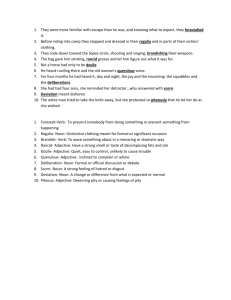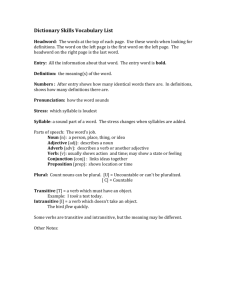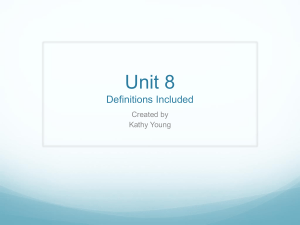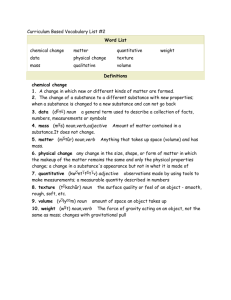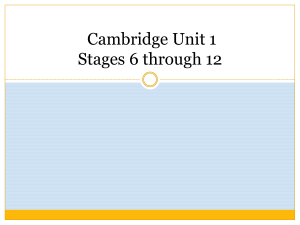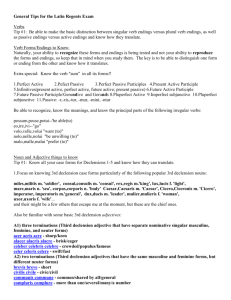Chapter 6 Notes
advertisement
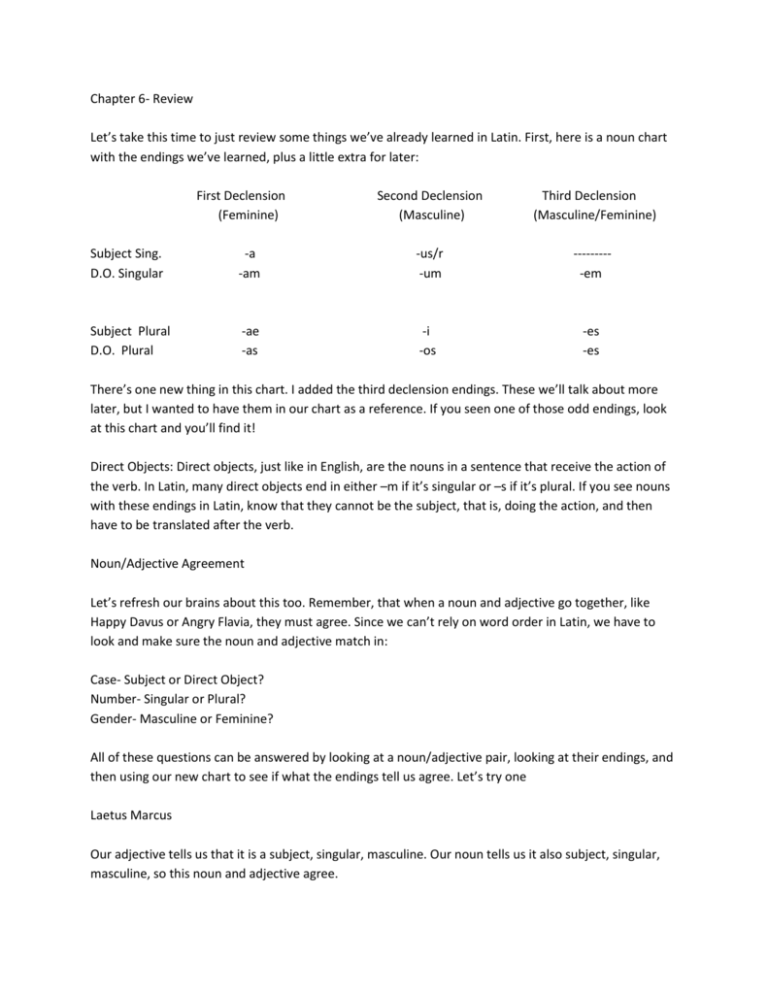
Chapter 6- Review Let’s take this time to just review some things we’ve already learned in Latin. First, here is a noun chart with the endings we’ve learned, plus a little extra for later: First Declension (Feminine) Second Declension (Masculine) Third Declension (Masculine/Feminine) Subject Sing. D.O. Singular -a -am -us/r -um ---------em Subject Plural D.O. Plural -ae -as -i -os -es -es There’s one new thing in this chart. I added the third declension endings. These we’ll talk about more later, but I wanted to have them in our chart as a reference. If you seen one of those odd endings, look at this chart and you’ll find it! Direct Objects: Direct objects, just like in English, are the nouns in a sentence that receive the action of the verb. In Latin, many direct objects end in either –m if it’s singular or –s if it’s plural. If you see nouns with these endings in Latin, know that they cannot be the subject, that is, doing the action, and then have to be translated after the verb. Noun/Adjective Agreement Let’s refresh our brains about this too. Remember, that when a noun and adjective go together, like Happy Davus or Angry Flavia, they must agree. Since we can’t rely on word order in Latin, we have to look and make sure the noun and adjective match in: Case- Subject or Direct Object? Number- Singular or Plural? Gender- Masculine or Feminine? All of these questions can be answered by looking at a noun/adjective pair, looking at their endings, and then using our new chart to see if what the endings tell us agree. Let’s try one Laetus Marcus Our adjective tells us that it is a subject, singular, masculine. Our noun tells us it also subject, singular, masculine, so this noun and adjective agree. Now, 95% of the time still, our nouns and adjectives that agree will have their endings match. Every once and awhile, however , our endings won’t match, and that’s when you need to make sure that the noun and adjectives match case, number, and gender. Verbs A quick review of verbs: When a verb ends in –t, it’s translated as he/she ________s or he/she is _________ing. When a verb ends in –nt, it’s translated as they _________ or they are ___________ing. If we have an infinitive, it will end in –re and will always be translated as to___________. If you see the phrase necesse est in a Latin sentence, know that it is translated as “it is necessary” and that it will need an infinitive to go with it to complete the phrase.



